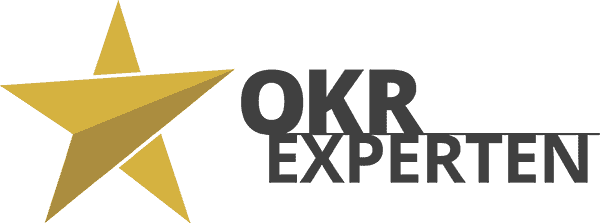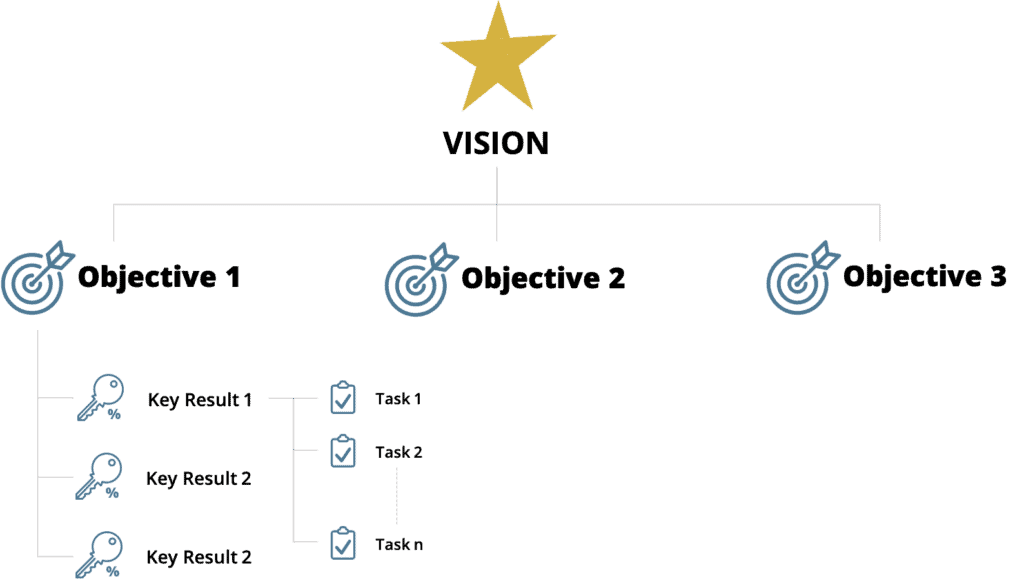
06 May What is OKR – Objectives and Key Results?
What is OKR – Objectives and Key Results?
What is OKR? OKR is an acronym and stands for“Objectives and Key Results“, a precise method for formulating and implementing objectives in companies. It was invented by Andy Grove and has been used at Intel since the early years of the company. Andy Grove derived the concept of the OKR from the teachings of Peter Drucker’s “Management by Objectives”.
An OKR consists of two components:
Objective
The term ‘objective’ refers to the goal itself. In other words, what is to be achieved – to whatever extent and in whatever timeframe. This target definition is carried out with the involvement of employees.
Key Results
The term‘Key Results‘ refers to the actionable steps that form the action plan to achieve the goal. It is important that these are steps whose effectiveness can be measured and quantified in order to realistically track progress towards the goal.
The scope of application of Objectives and Key Results
The OKR method is not only suitable for management, but for every employee at all levels in the organization. This enables employees to set themselves targets and track and measure their progress towards these targets. This brings everyone in the company, from C-level management to employee level, to a common denominator – and closer to a common goal.
The idea of OKR
The company’s OKR sets essentially break down the company’s vision so that it can be followed by all departments, teams and individuals. You do not have to use OKR at all levels. For example, you can decide to use the method only at company and department level for the time being and later, when your organization is familiar with the method, introduce OKR at team level. For use in sales teams, read more in this article. We do not recommend its use at individual level.
A vision typically defines the purpose of your organization’s existence (“Why do we exist?”). It is usually a long-term, often abstract goal that can be achieved in 5-10 years. Objectives and Key Results helps you to translate this vision into meaningful, achievable sub-goals.
The following illustration shows how a company’s vision is broken down into several objectives, which are then tracked and measured against the associated key results and finally the tasks that lead you to these key results.
However, the use of OKRs does not end once they have been recorded in a protocol. Successful implementation of the method requires a continuous management process. This includes regular check-ins to track and measure your progress and adjust the direction and extent of your work. These check-ins show you the difference between the expected and the actual result. Most OKR check-ins are carried out on a weekly basis. In some cases, it may make sense to report them on a monthly or quarterly basis.
This is what you can expect when you use OKR correctly:
- All your teams and individuals are aligned with their management
- All your employees know what they are responsible for
- Self-organized teams
- Culture of transparency
A well-written OKR set gives you a sharp focus on what is really important for your business. Many successful companies have already introduced the method and attribute a large part of their success to its use. It has become part of their culture and has helped them create a results-oriented team that consistently delivers success. When you integrate OKR into the management process, you build a successful, high-performing team that delivers the results that matter most to your organization. You can find out more about why OKR can also be useful for your company or start-up here.
We, the OKR experts, will be happy to advise you!
Courtesy Profit.co








